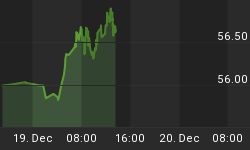Below is an extract from a commentary originally posted at www.speculative-investor.com on 31st July 2005.
Gold and Terrorism
Attacks by terrorists linked to al Qaeda and other radical Islamist groups have recently begun to occur with greater frequency. Also, the recent attacks have been small-scale compared to previous efforts and appear to have been carried out with less preparation. All of which suggests increasing desperation on the part of the barbarians. Furthermore, the fact that more frequent smaller-scale attacks are occurring points to an inability to effect an operation on the scale of the September-11 attacks on the US, the Madrid train bombings of 2004, or even the 1998 bombings of two US embassies in East Africa.
If the recent small-scale attacks do represent a last-ditch effort by al Qaeda to reinvigorate its barbaric agenda then similar attacks are likely to happen over the coming months, but attacks like these probably won't have a big effect on the financial markets. However, let's assume, for the moment, that these smaller attacks are essentially just diversions and a large-scale attack is being planned. How would the markets react in the event of a devastating attack by terrorists in the US or Europe?
In our opinion, the performance of the markets in the wake of the September-11 2001 attacks provides the most plausible answer to the above question. As far as the gold market is concerned, the below chart of the London gold price -- we are using the London market in this analysis because the New York market was closed during the days following the attacks -- shows that the gold price spiked up by about 10% and then quickly dropped back to about where it was prior to the attacks. The chart also shows that about two months after the September-11 attacks the gold price commenced a large 3-year advance.
The gold market's response to the events of September-11 2001 was not surprising because gold is not a hedge against terrorism or war; it is a hedge against a loss of confidence in fiat currency. When the September-11 attacks happened a gold bull market was already in its embryonic stage as a result of the loss of confidence in the dollar that resulted from the bursting of the NASDAQ bubble and, more importantly, the Fed's attempts to inflate-away the bad effects of the bursting bubble. And while the attacks themselves caused a knee-jerk reaction in the gold market, it was really the inflationary responses of the Fed and the US Government to the attacks (and to everything else that was going on) that caused the gold price to move substantially higher.

The bottom line is that if you think a large-scale terrorist attack has a good chance of happening over the next few months (we don't) and you are looking for a way to financially hedge against such a dire outcome then you'd be much better off being 'short' the stock market than being 'long' gold. However, if, like us, you expect the Fed to aggressively promote inflation over the next few years regardless of what happens on the terrorism front then you should be planning to buy gold during this year's dips.
Current Market Situation
Below is a daily chart of the Dollar Index covering the past five years. Resistance at 92, which is clearly evident on this chart, is our long-standing target for the FIRST upward leg in dollar's bull market (our view is that the dollar is in a cyclical bull market within the context of a long-term bear market). However, the longer the dollar spends consolidating in the high-80s the greater the chance that the first upward leg will exceed this resistance.

Gold and silver are rebounding from near the bottoms of their respective consolidation ranges, which, as noted in last week's Interim Update, was the highest probability outcome. We wouldn't be surprised if these rebounds took gold as high as $440-$445 and silver as high as $7.50-$7.60 (the tops of the consolidation ranges), but we would be surprised to see gold and silver move significantly above the aforementioned levels at this time.
The consolidations in the gold and silver markets that have been in progress since early this year will, in our opinion, end via downside breakouts, but we could still be a month or more away from any breakout.















